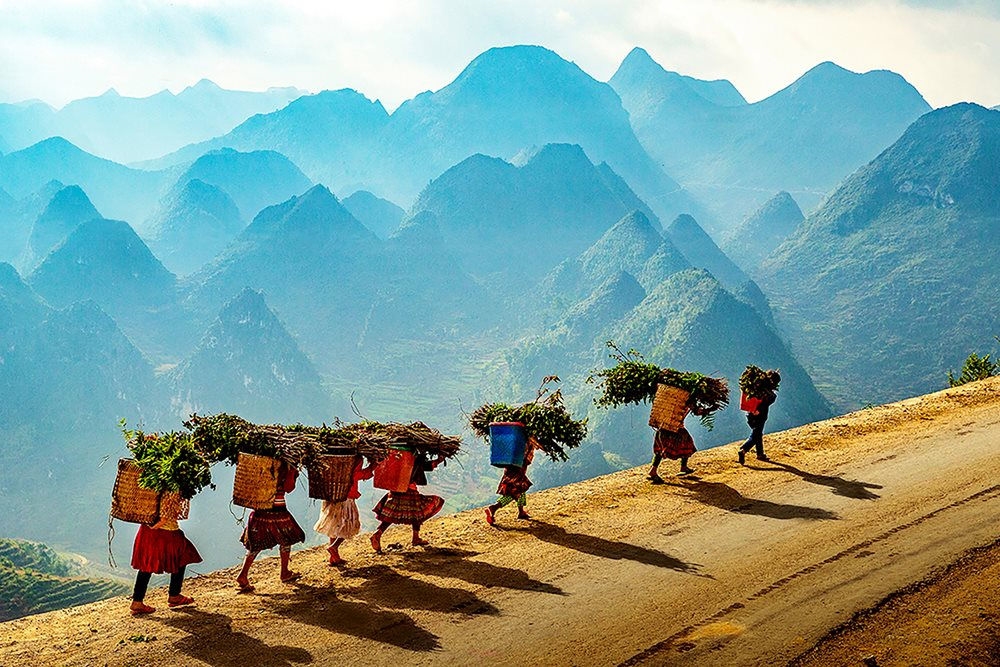Cao Bang – An attractive tourist destination in the Viet Bac region
-
admin_dev
-
February 13, 2023
-
996
Cao Bang is a mountainous province, it has the North and Northeast borders with Guangxi (China) with a border length of over 333km; The West borders with 2 provinces of Ha Giang and Tuyen Quang, the South borders with 2 provinces of Bac Kan and Lang Son.
Cao Bang has a natural area of 6,703.42 km2; is a limestone plateau interspersed with soil, with an average height of over 200m, the bordering area has an elevation of 600m – 1,300m above sea level. Mountains and forests account for more than 90% of the province’s area, and there is only nearly 10% of flat land for cultivation. The current population is over 519 thousand people.
Cao Bang is famous for Pac Bo historical site – where President Ho Chi Minh lived and worked after 30 years of leaving to find a way to save the country. Cao Bang is also known for the majestic image of Ban Gioc Waterfall that blends in with the mountain landscape, creating a charming painting; along with the pristine cave complex with unique and special cultural and spiritual tourism potentials, is an irresistible attraction for tourists near and far.
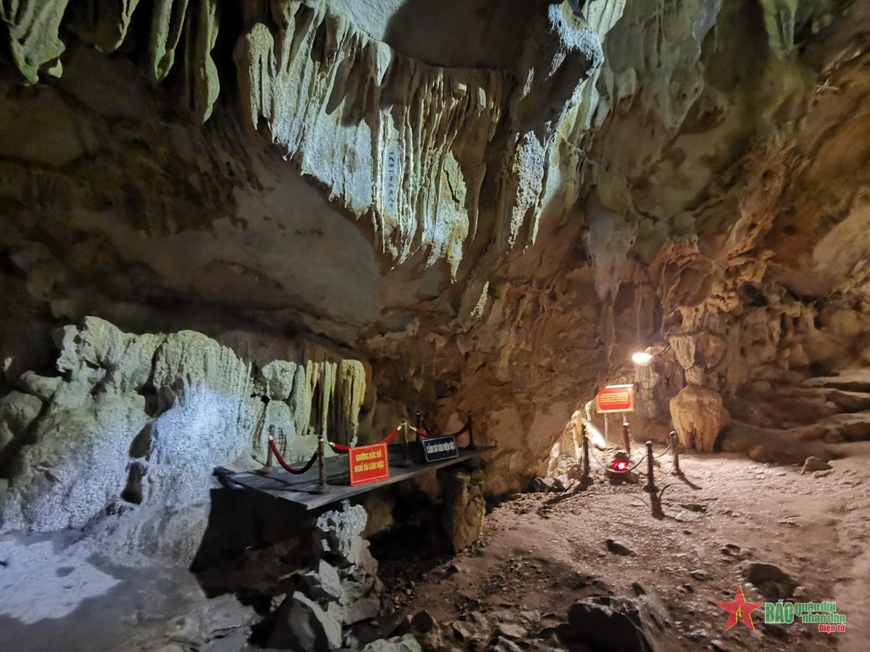
Pac Bo and the historical relics of the nation
Pac Bo is located in Truong Ha commune, Ha Quang district, close to the Vietnam – China border, far more than 50km from Cao Bang city. After 30 years of traveling abroad to find a way to save the country, on January 28, 1941, leader Nguyen Ai Quoc returned to the country through the milestone 108. He chose Pac Bo cave as a place to live and work for the country’s revolution in years of 1941-1945.
Here, leader Nguyen Ai Quoc opened political and military training classes for the revolutionary cadres of Cao Bang province, which led to the August Revolution 1945. On May 4, 1945, he left Pac Bo to Tan Trao (Tuyen Quang) to lead the General uprising to seize power in the country (August 1945) to victory…
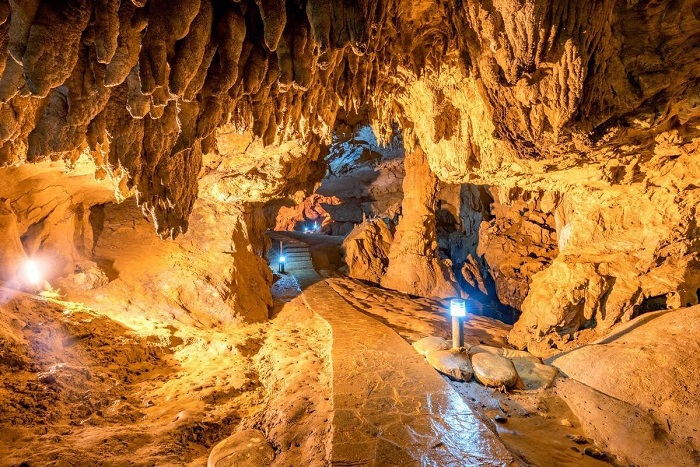
Pac Bo Cave is a natural cave (also known as Coc Bo) in the Tay language means “watershed”. In front of the cave, there is a large stream flowing underground from the rocky mountain, all year round, the water is clear blue, flowing around embracing the high mountain. President Ho Chi Minh named Le – Nine Stream, Carl – Marx Mount in memory of two great mentors who helped him find the way to national liberation.
With special values of history, culture and science, Pac Bo historical relic site has become one of the important relic sites of the country about President Ho Chi Minh and the Party Central Committee of Viet Nam. Today, Pac Bo has become an invaluable cultural and historical relic complex of the Vietnamese nation, a place to educate historical traditions and patriotism for generations of young people.
Along with the special National Historic Site of Pac Bo, Cao Bang also has many other famous and attractive historical tourist attractions such as: Tran Hung Dao Forest – Special National Monument – the place of founding Vietnam Liberation Army propaganda team, the forerunner of the Vietnam People’s Army; Historical site of the 1950 Border Campaign (Na Lan village, Duc Long commune, Thach An district); Kim Dong Heroic Martyr relic (Na Ma village, Truong Ha commune, Ha Quang district); The relic of Phai Khat Fort…
The wonders of Ban Gioc Waterfall and natural caves
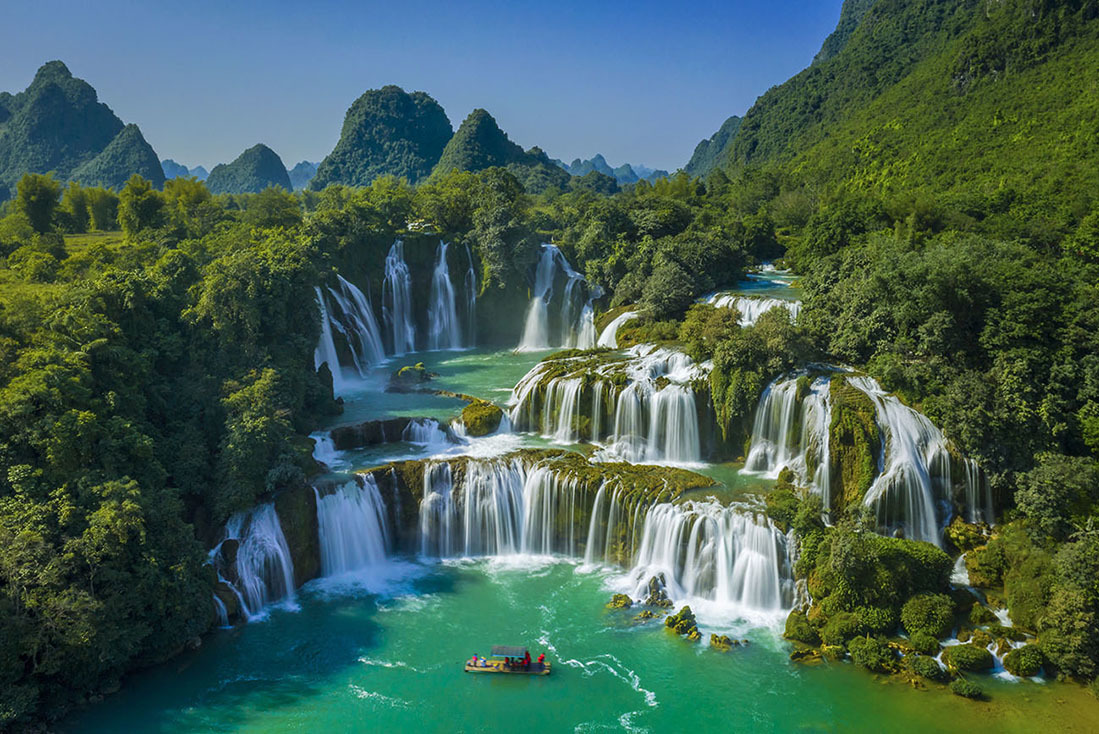
From Cao Bang City, going through 89 km of Ma Phuc Pass, Khau Lieu Pass, passing through villages, following the green Que Son River, visitors will come to Ban Gioc Waterfall – one of the most beautiful waterfalls best in Vietnam. The waterfall is located in Dam Thuy commune, Trung Khanh district, Cao Bang province.
Ban Gioc Waterfall has a height of 35m and a width of 300m, arranged in 3 floors, including many large and small waterfalls with different names such as Dua Bac, Lay San, Nga Moong, Nga Trang, Nga Vai, Nga Rang, Thoong Ang… Large stream of water poured down through many limestone steps forming a white mist of water. From a distance, visitors can hear the sound of waterfalls flowing loudly echoing a large area. In the middle of the waterfall, there is a large mound covered with trees that split the river into three water cages like three white silk strips. On hot summer days, the air here is still cool and in the morning the sun shines through the steam into a shimmering, fanciful rainbow.
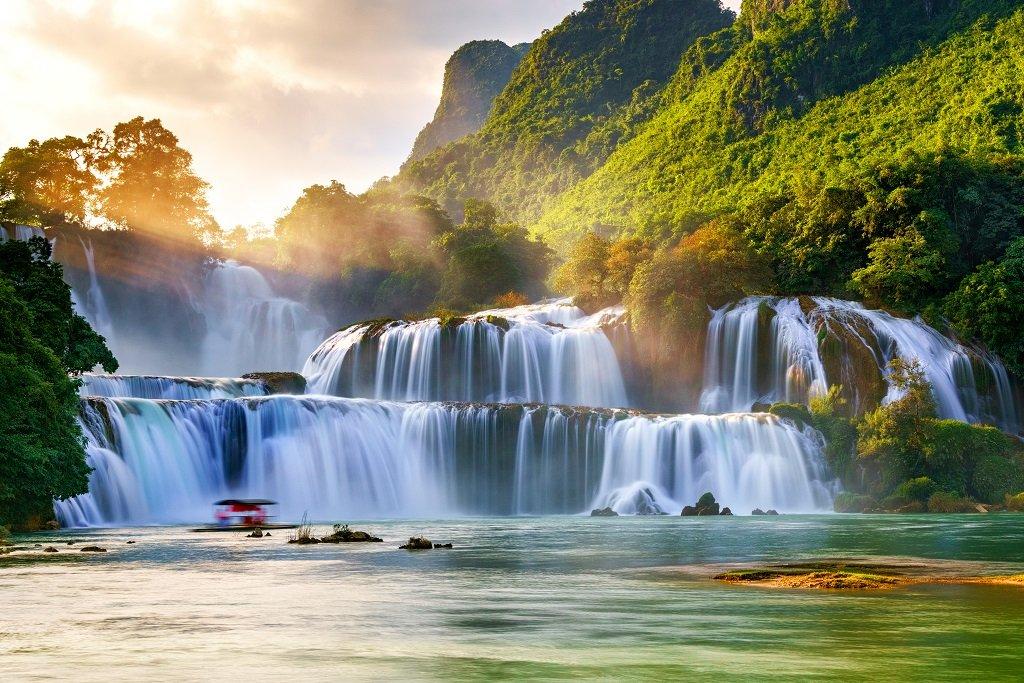
The majestic Ban Gioc waterfall (Photo: Internet)
Legend has it that there was a beautiful girl who was promoted to the king but risked her life to escape with her lover. After finding each other, they fell asleep forever together. The villagers witnessed it pouring rain all week. Water flooded the stream, no one dared to go out because of heavy rain and intense thunder. Strangely, when the rain stopped, people saw two large waterfalls pouring white water beside the village. At the foot of the waterfall, the water surface is clear and gentle as if not entangled with dust. Since then, people have called this place Ban Gioc waterfall to commemorate a time when a girl from the village advanced to the king, also the pride of the Tay people with their natural beauty.
Today, Ban Gioc Waterfall is considered to be the most beautiful waterfall in Vietnam, located on the Vietnam – China border, amidst the pristine mountain scenery. Ban Gioc is also honored as the largest natural waterfall in Southeast Asia and the fourth largest in the world among waterfalls located on a national border.
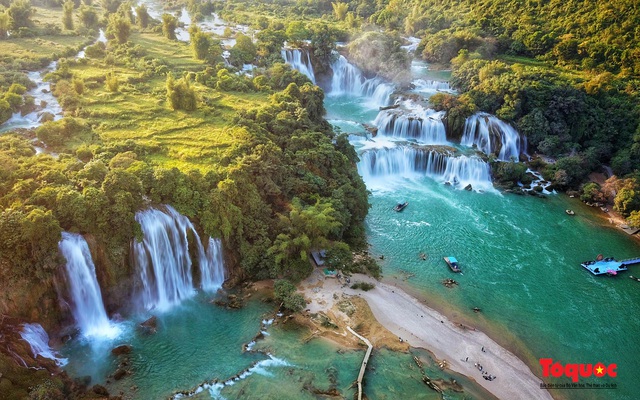
Along with Ban Gioc Waterfall, nature also favors the land here with a series of massive, wild, and interesting natural caves such as Nguom Ngao Cave (Chong Khanh), Bat Cave (Ha Lang), caves and caves. Ki Lu, Khuoi Khua Cave (Phuc Hoa), along with Phja Oac – Phja Den (Nguyen Binh) and Thang Hen lake – river – underground cave complex, forming an interesting eco-tourism area, attracting many tourists .
Nguom Ngao Cave is located in Gun village, Dam Thuy commune, Trung Khanh district, Cao Bang province. According to survey documents of the British Royal Survey in 1995, the cave has a length of 2,144m. The cave consists of three main gates: Nguom Ngao, Nguom Lom (ie wind gate, cool all year round) and Ban Thuon gate behind the mountain in Ban Thuon. In the Tay language, “Nguom” means “dong”, “clam” means “tiger”; “Nguom Ngao” means tiger cave. Nguom Ngao Cave is divided into three main areas: the Four Pillars of Heaven, the central area and the treasure area. Nguom Ngao has an extremely interesting beauty created by layers of splendid, golden stalactites. Colorful stalactites grow from the bottom up, from the top of the high stone arches hanging down with many beautiful shapes reflecting shimmering light.
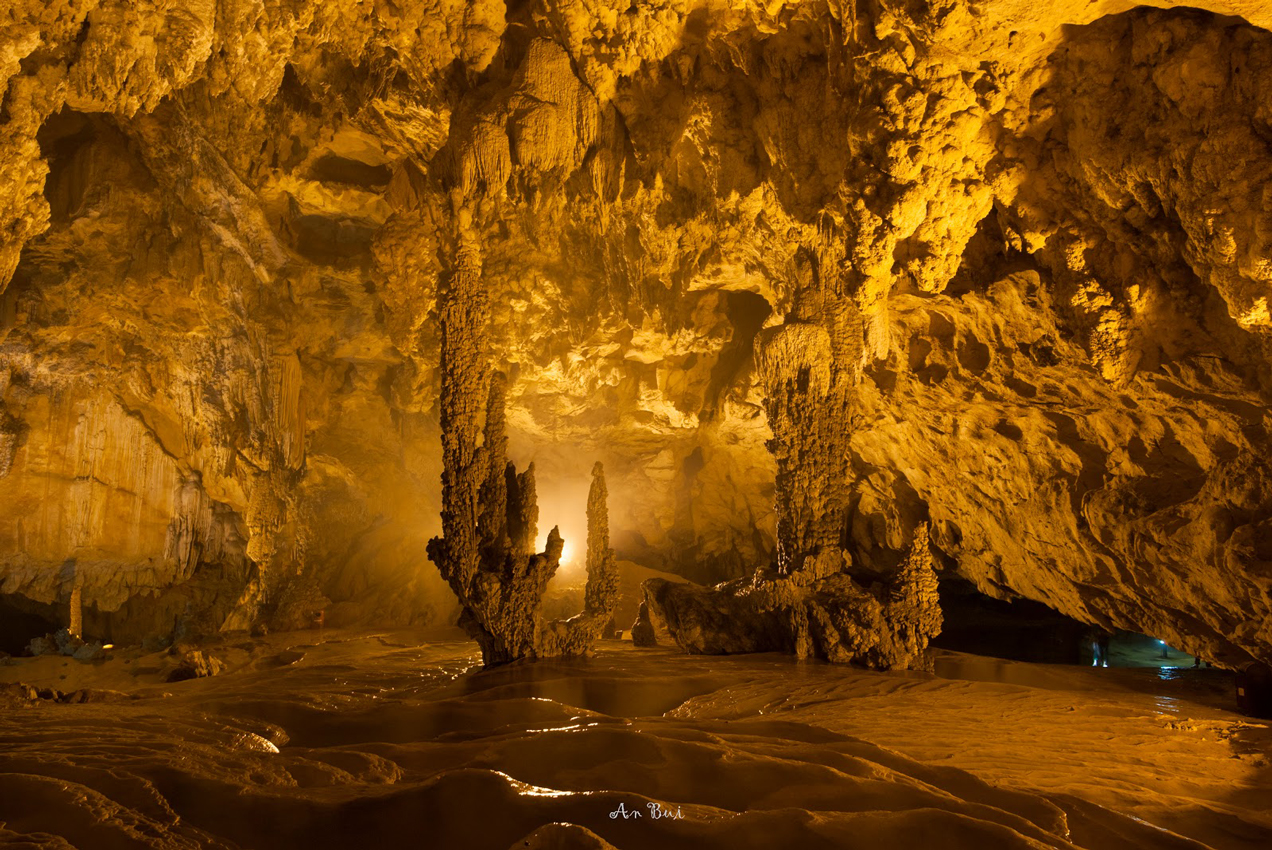
Nguom Ngao Cave (Photo: Internet)
Located in Quoc Toan commune, Tra Linh district, Cao Bang province at an altitude of thousands of meters above sea level, Lake Thang Hen is a beautiful lake among 36 large and small lakes in the mountainous area of Tra Linh district. Located in the middle of a mountainous area and the green of trees stretching over the craggy cliffs, reflecting on the clear water, winding along the undulating valleys of underground quarries. Thang Hen Lake has a diamond shape, from 100m to 300m wide, from 500m to 1,000m long. Upstream is a large cave, from within the cave water flows out day and night. A particularly interesting thing, according to local people, about once every 10 years, suddenly the water of Thang Hen lake dries up and after only a few days the water rises again.
According to folk legend, once upon a time in Cao Bang, there was a man named Sung, who was smart and handsome. He passed the exam to be a mandarin and was rewarded by the king with seven days of honoring to pay homage to his ancestors. Returning to his hometown, he married the beautiful Booc. Being attached to his beautiful newlywed wife, he forgot the day he returned to the capital. On Saturday night, he suddenly remembered, and hurriedly said goodbye to his wife and parents and ran back to the capital. In the middle of the night in the wild forest, he ran 36 steps, then fell his head and hit the mountain and died. His 36 steps today are 36 large and small lakes with different names of local dialects in Tra Linh district. Legend has it that the place where he lay down is today’s Thang Hen lake.
With more than 20 ethnic groups living together, such as Tay, Nung, Mong, Dao, Kinh, Hoa, Lo Lo…, Cao Bang’s traditional culture is formed by its own distinctive customs and culture. of each residential community, like a multi-cultural flower garden attracting tourists to explore and experience.
Coming to Cao Bang, visitors can enjoy Sli singing, Then singing, traditional Lon singing; Discover the unique features of ethnic minority rituals such as the Tay’s birthday celebration, the wedding of the Black Lo Lo people, the H’mong people, the Phi Ham worshiping custom of the Tay Nung people, the Nang Hai festival, and the Thanh Minh festival. , Sung Phuc Pagoda Festival … Or enjoy famous specialties, bold ethnic cuisine such as sausages, sticky rice fillings, Trung Khanh chestnuts, banh xeo, banh che lam…
Source: Collection









